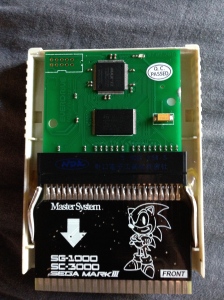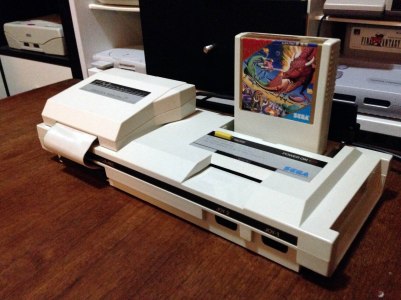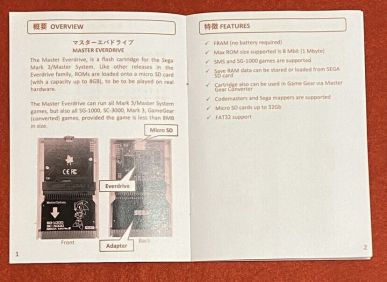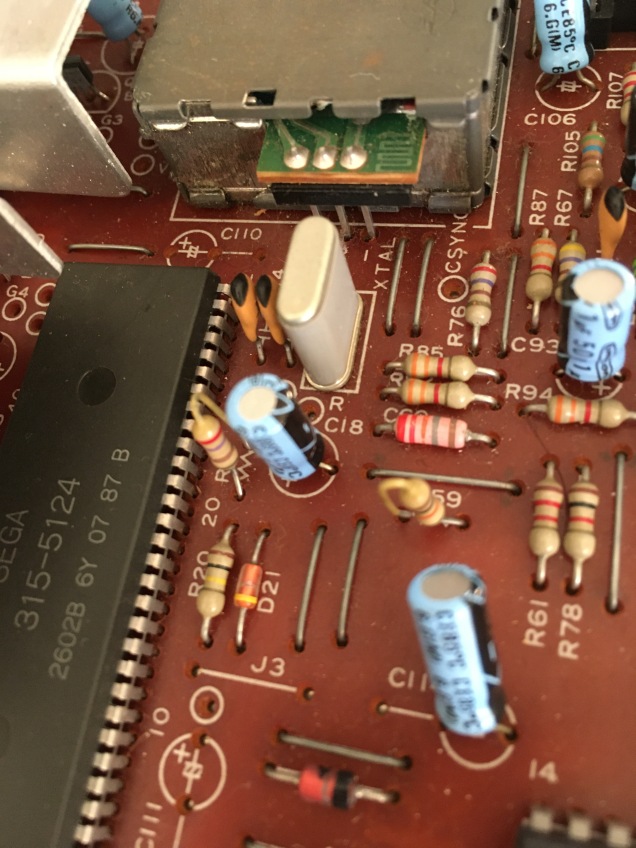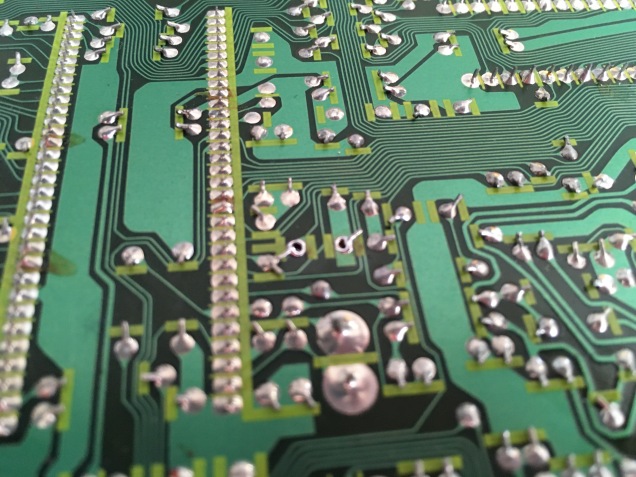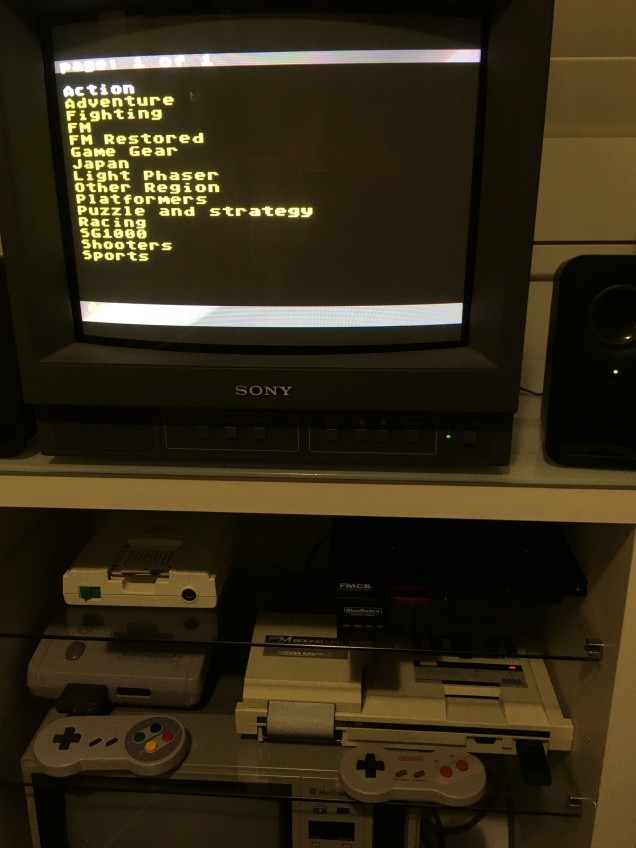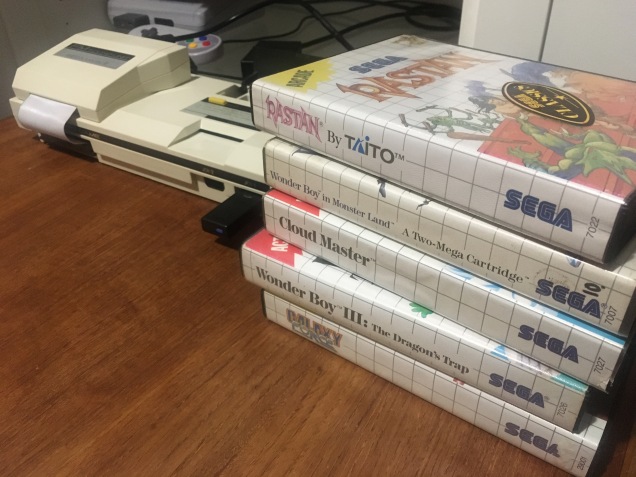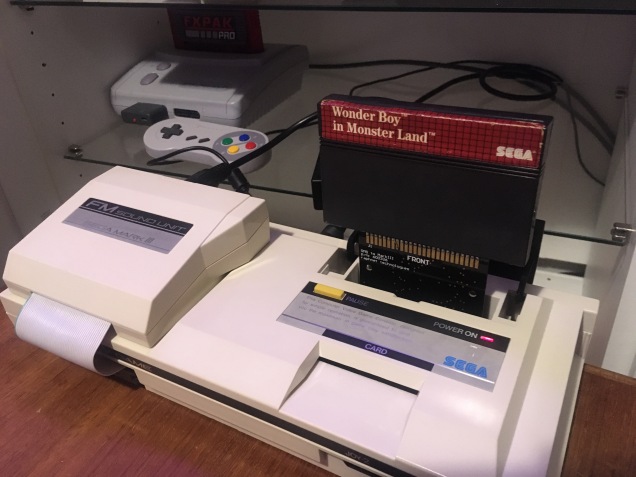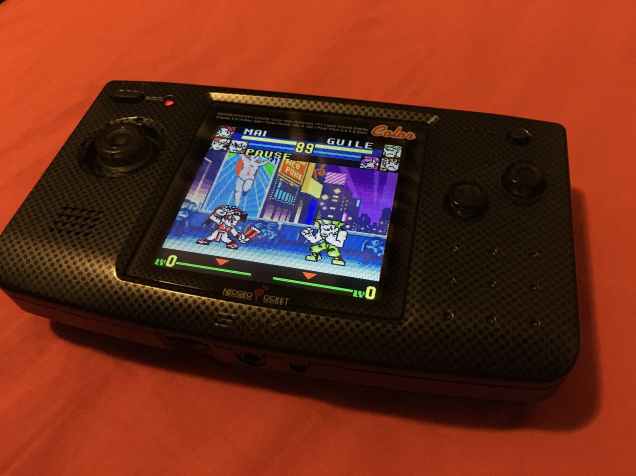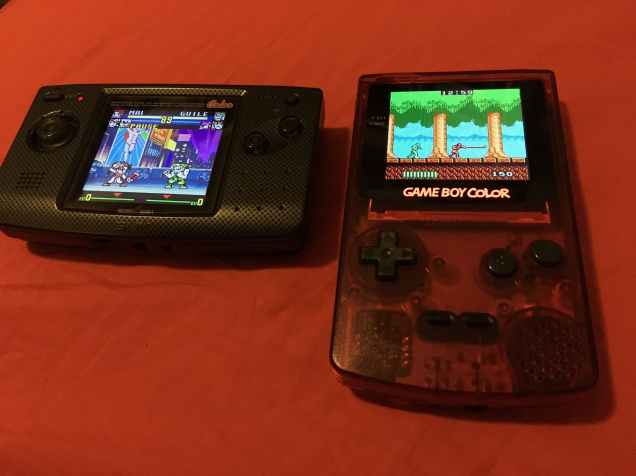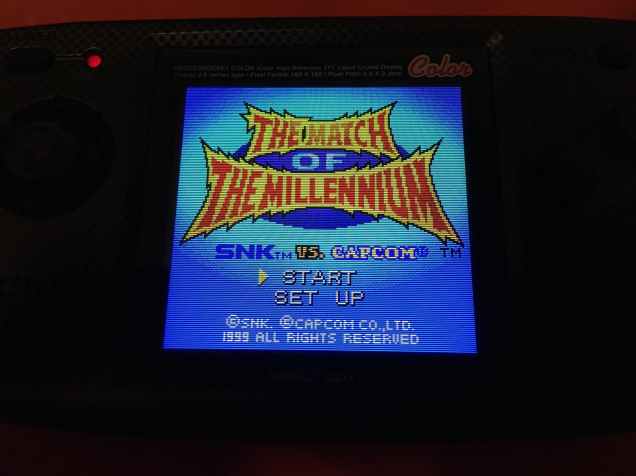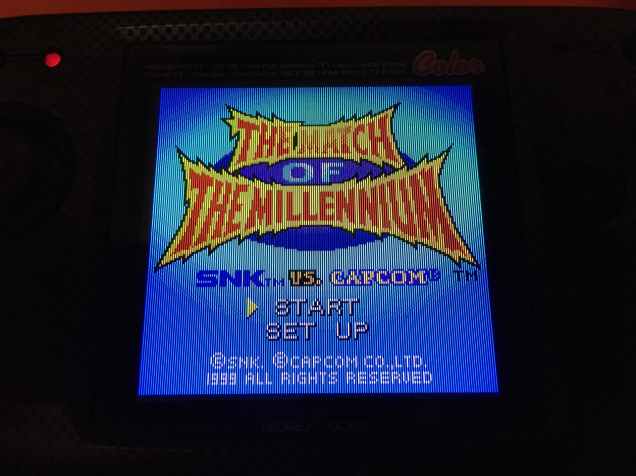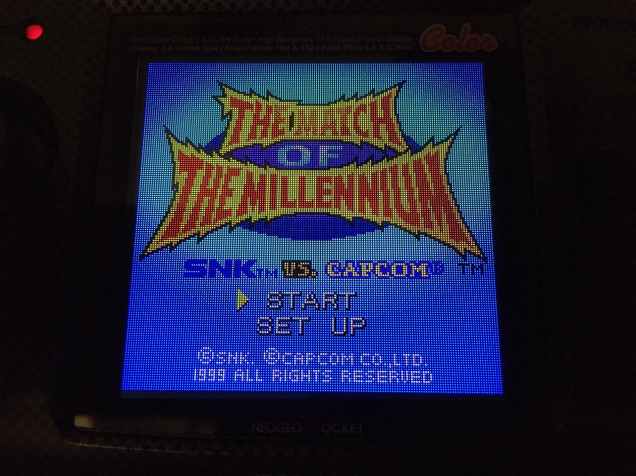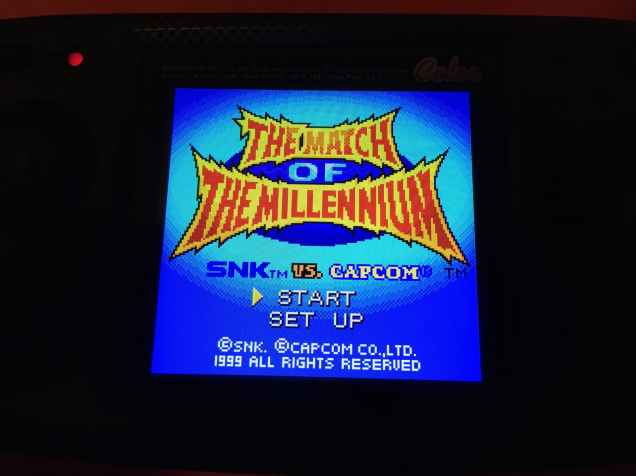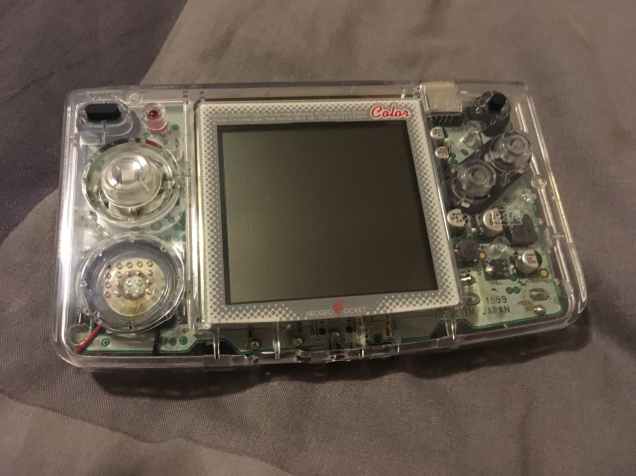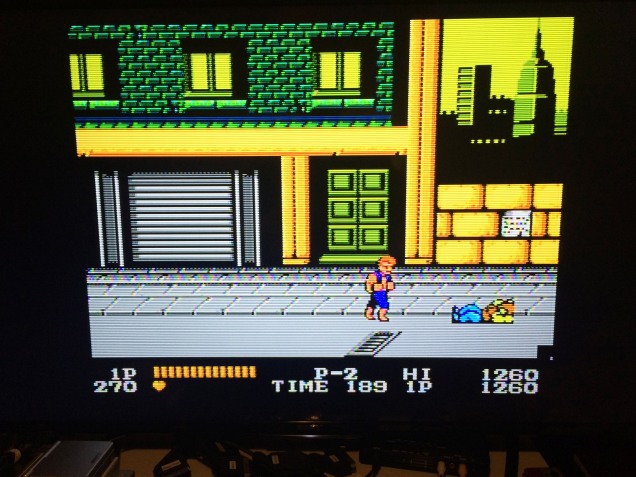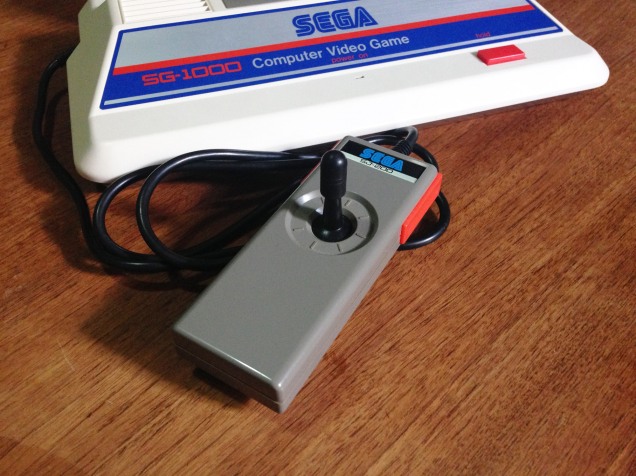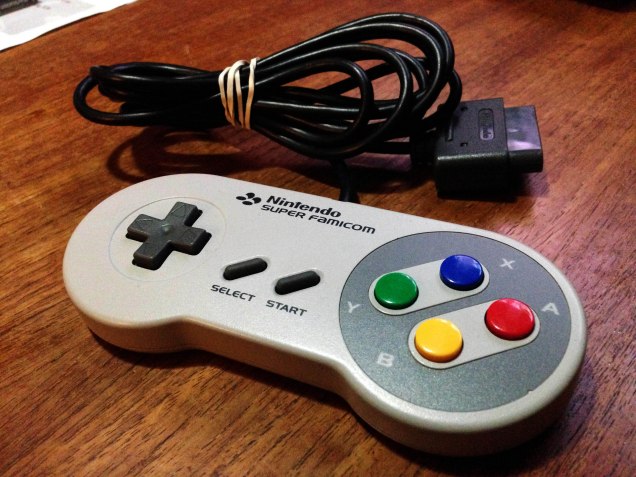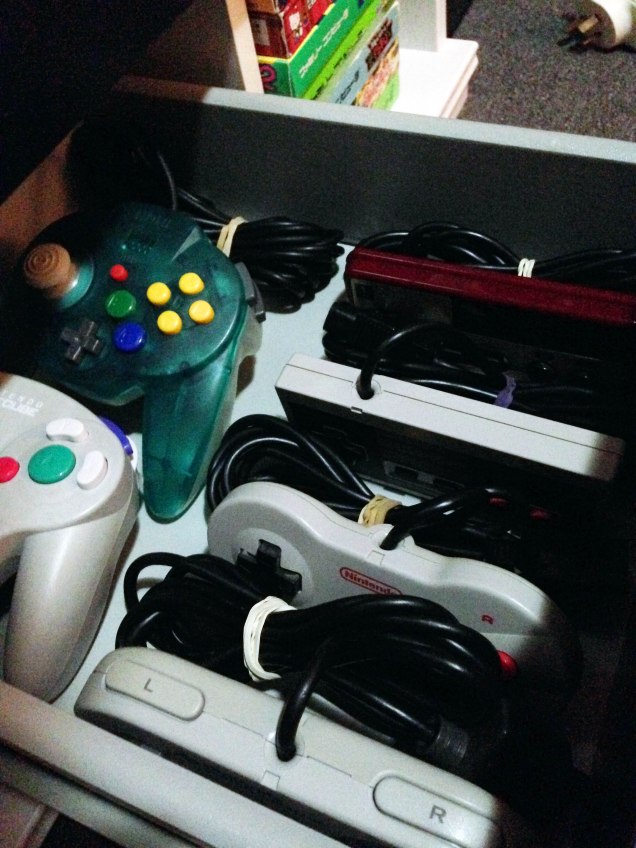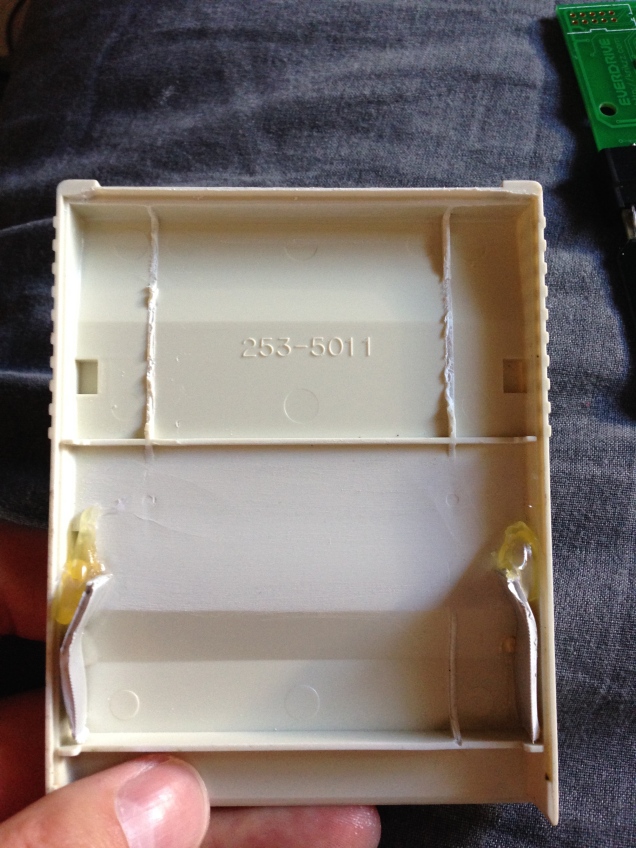I decided to mod my Mark III consoles to work with the later Everdrive OS versions. The original Master Everdrive works on a Mark III using the oldest versions of the operating system, and this is what I used to make my Mark III Everdrive back in 2015.
It also seems in the intervening years some sellers have commercialised this idea with 3D printed shells, based on images I’ve found.
However, this version of the Master Everdrive is no longer sold, and the new version (and most clones) just won’t work on Sega’s white wonder.
Using info found on SMS Power by user Neto, you can get it booting by changing the value of the capacitor at C18.
Finding the points on the bottom of the board, I add some extra fresh solder, then heated up the points and used a solder sucker.
Unfortunately the first time I did this, when pulling the legs of the old cap up from their bent position, the solder pad came off. I guess messing with 38 year old pads can have issues.
To repair I followed the trace it on the board and connected it up where it should be, the console booted but acted weird, it would keep resetting.
I had to pull up the schematics:

And found killing the pad had essentially killed two traces, and I had to wire the positive leg of the cap between a resistor and a leg on an IC, and then it was up and running.
On my second Mark III it looked like I would have the same issue, as I pulled up the capacitor leg the pad started coming with it, so I just clipped the legs of the old cap on the top of the board and fed the new one through.
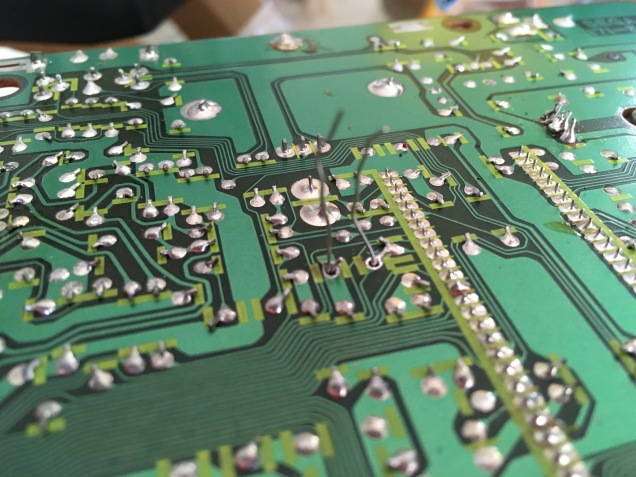
I then soldered it up and clipped of the excess. And now it’s up and running perfectly with the latest firmware.
There is one downside. It seems changing this value on bootup affects region selection in some way, and some real western Master System carts now fail to utilise the FM module, and revert to PSG audio.
It only affects some games – of those I tested I found Rastan, Galaxy Force and Wonder Boy III: The Dragon’s Trap played in PSG, while Cloud Master and Wonder Boy in Monster Land still worked with FM.
There are two potential fixes. The first I worked out myself is that this process can be semi-interrupted by holding reset on boot, this returned FM sound to Rastan but it still failed on others.
The second is even better. A recent post by ApolloBoy six years later on the exact same SMSPower thread suggests another capacitor value, 1uF instead of 0.1uF, which has the everdrive still working but FM restored in at least one game. I’ll test this soon!
